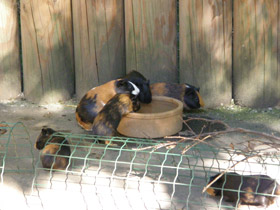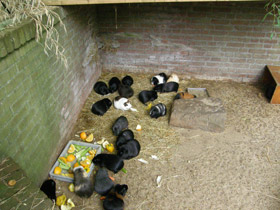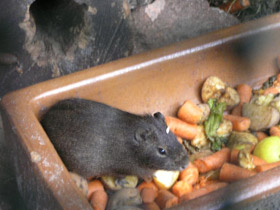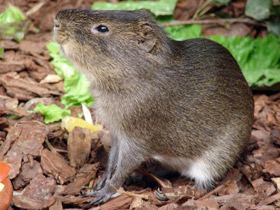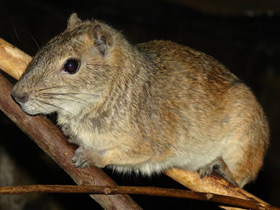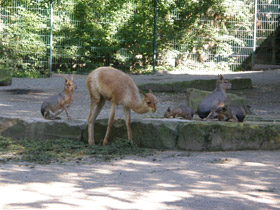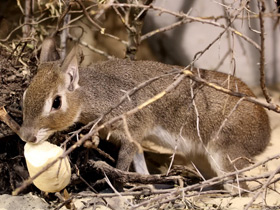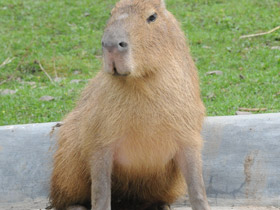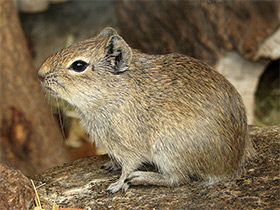Family Cavids Caviidae
The Cavidae occur over most of South America. They inhabit various climate zones, from lowland savannahs to rocky, high-altitude meadows where they live at elevations of up to 4,000 meters above sea level. Cavids are small rodents with robust bodies and short limbs. Depending on species, they have a body length of 20 to 75 cm and weigh between 1.5 and 16 kg. Cavids are typically active in the daytime. In spite of harsh conditions of the highlands, these animals do not hibernate. They shelter in burrows that they dig or that are left by other animals. Cavids usually live in groups consisting of the male, female and their offspring; some Bolivian species have complex social structure and prefer living in large congregations. Horse riders are not able to move over the huge “towns” of cavids as the horse hooves sink into numerous shallow tunnels. One species of cavids have well adapted to the wet, marshy areas located in the periphery of the forests in Brazil, Uruguay, Paraguay, and Argentina but most typical habitats of cavids are presented by dry grasslands with small scrubs. Cavids eat primarily plant material, such as fruit, seeds, and grains, but there is considerable variation in dietary specializations. The gestation period is long comparing with other rodent families: it is from 50 to 70 days. Young are born well-developed, furred, with emerged teeth and open eyes. Although the female has only one pair of nipples, there are often 3 or 4 young in a litter. The young grow fast and disperse early. They are able to breed at 2-3 months of age. In the wild, females produce two litters per year but captive animals could breed more often. The longevity of cavids is relatively long: up to 10 years.

















